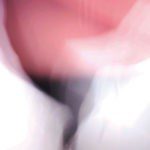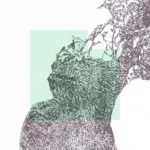SILENT VIGILS – WAKE 
Home Normal releases the third album by Silent Vigils: Stijn Hüwels and James Murray – whose collaboration once again proves to be very fruitful. It seems to be the conclusion of an album trilogy (preceded by Fieldem and Lost Rites), but I would not be surprised if more will follow in the future.
In the four tracks (38 minutes for the total album), Murray and Hüwels offer a much needed “uplifting and timely salve for these troubled times… an exceptional celebration of new life and boundless spirit.”
Are there choirs singing along softly, or is this just my imagination complementing the soothing sounds of their guitars?
The opening track is called Wake, the closing track is Unborn, which may indicate a return to innocence? I am not sure about the meaning of the other two titles, Mokugomi and Munhitsu, but they are all in the same spirit … a much-needed spirit in the current confusing times.
JAMES MURRAY & MIKE LAZAREV – SUÑÑATĀ
Another James Murray collaboration, but with a quite different sound, is this Home Normal album together with Mike Lazarev. Mike is probably best known for his tireless work on his Headphone Commute blog, which seems hard enough to combine with a full-time job itself. But apart from that he also plays the piano (and sometimes cello).
Murray and Lazarev previously worked together on a rework of Murray‘s track Living Treasure from his Falling Backwards album; this new short EP-length album (23 minutes) shows more of their friendship.
Lazarev‘s post-classical piano compositions are colored by the delicate textures created by Murray which feel like a natural echo reflecting back the soul of the piano.
Google Translate obviously can’t handle the album and track titles.. So I asked Mike to explain where they come from: “they come from the Pali language, a very old language in which some of the Theravada Buddhist scriptures are written. Suññatā ‘is the experience of encountering the non-self, of a sound and its reflection meeting in empty space.'”
And, since he was kind enough to explain them, I can best include the translations of the other track titles too:
Appaṇihita – Free from desire
Lokuttara – Transcendental (beyond the understandings of this world)
Rittaka – Void (outside of our perceived reality)
Tucchaka – Hollow (sensual pleasures are impermanent and hollow)
Asāraka – Coreless (no center – nothing inside)
Animitta – No perception (no input through 5+ senses)
Appaṇihito – Undirected (no specific place in space)
“They are all focused on finding the emptiness within. All of these words refer to things that are deceptive, false, and not part of the true understanding. Hope you now see and recognize the pattern in the above and how it connects with music.”
IAN HAWGOOD – PEACE FRAGMENTS 
It’s only a small step from the two releases above (both released on the Home Normal label) to Peace Fragments from Ian Hawgood (Home Normal’s label owner and curator).
James Murray returns the favor by releasing this album on hís own Slowcraft label, in its (digital-only) Lifelines series.
The three tracks of varying length (18, 40 and 5 minutes) “reflect the texture of Ian Hawgood’s life by the sea: the high and low tides of the East Sussex coast.”
Combining synth and guitar loops with hydrophone low tide recordings indeed results in “a compellingly focused sense of security and ease.”
The synth and guitar loops are recorded on a set of Uher reel-to-reels with a nice warm lo-fi result. Mixed with the hydrophone recordings, the album feels as if you are there, with him, on the coastal waterside. Because of its unpolished lo-fi touch, it almost reflects a live-experience.
Peace Fragments is the first album in an upcoming series “showcasing Hawgood’s substantial library of underwater hydrophone recordings”.






